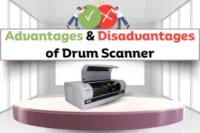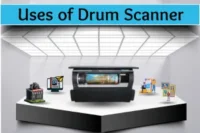Classification of Printers: Based on Use and Features
Published: 17 Jun 2025
Choosing a printer can feel confusing. Some are fast, some are inexpensive, and some can scan and copy as well. That’s where the classification of printers comes in. It helps you understand which printer fits your task—whether it’s printing homework or handling business reports.

Classification of Printers
The classification of printers refers to grouping them based on their functionality or intended use. It helps organize printers into categories like technology, speed, size, function, connectivity and more.
Whether you need a printer for school, office, or high-volume printing, understanding printer classifications helps you choose the right one.

Based on Printing Technology
This category groups printers by the method of printing—the internal mechanism or process they use. Each printer type works differently and suits various needs, such as home, office, or commercial use.
Inkjet Printers
Inkjet printers spray tiny drops of ink onto paper. They are great for printing color photos or school projects at home. These printers are affordable, but they require regular ink refills.
Laser Printers
Laser printers use a laser beam and toner powder to print text quickly and sharply. They are ideal for office use where you need to print many documents rapidly. They cost more upfront but save money in the long run.
Dot Matrix Printers
Dot matrix printers (DMP) use a print head that strikes the ribbon to form letters. They are noisy but useful for printing bills or multi-copy forms. Many banks and shops still use them for receipts.
Thermal Printers
Thermal printers use heat to print on special paper. They are common in billing machines, ATMs, and barcode label makers. They work quietly and don’t need ink, but the prints can fade over time.
LED Printers
LED printers work similarly to laser printers, but they use light-emitting diode (LED) lights instead of a laser. They are reliable, fast, and have fewer moving parts. Some businesses prefer them for long-term use due to their low maintenance requirements.
Daisy Wheel Printers
These use a wheel with characters that strike ink onto paper, like a typewriter. They print slowly and only text. These were common in older offices before the arrival of faster printers. Now these printers are outdated.
Line Printers
Line printers print one complete line at once. Large companies use them to print lengthy reports or logs quickly. These printers work quickly but only handle plain text well.
Based on Purpose
Printers in this group are classified by why you use them. The purpose decides how powerful or simple a printer needs to be. Whether it’s for home use, office tasks, or heavy production—each has its match.
Home Printers
Home printers handle basic tasks, such as printing homework, photos, or tickets. They save space, cost less, and set up quickly. Many families and students opt for inkjet printers to meet these needs.
Office Printers
Office printers handle more pages every day. They are faster, offer more features, and support printing from a wide range of devices. Laser printers are often used in offices because they print quickly and reduce running costs.
Production Printers
Production printers handle high-volume printing, printing up to 10,000 pages every month. Businesses use them to print reports, flyers, and booklets in bulk.
Portable Printers
Portable printers are small and easy to carry. People use them for printing receipts, documents, or photos while traveling.
Size Based
Printers also come in different sizes. The size affects where you can place them and what paper sizes they support. Some fit easily on a desk, while others require more space for printing large designs.
Desktop Printers
Desktop printers are small enough to sit on a table or shelf. They are perfect for homes, schools, or small offices. Most inkjet and personal laser printers fall into this category.
Large Format Printers
Large-format printers can print on large paper, banners, or posters. Designers, architects, and print shops use them for wide or high-detail prints. They occupy more space but produce high-quality output on large media.
Based on Functionality
Printers are also grouped by what tasks they can perform. Some individuals do only one job, while others can handle multiple tasks. Choosing the right one helps you save space, time, and even money.
Single-Function Printers
Single-function printers handle only one task—usually printing. They cost less, work simply, and suit users who only need to print. These are a good pick if you don’t need scanning or copying.
Multifunction Printers (All-in-One)
Multifunction printers can print, scan, copy, and sometimes fax. They save space because you don’t need separate machines. These are ideal for homes and offices that require more features in a single device.
Output Type Printers
We classify printers by the type of content they print. Some print sharp text, while others focus on photos or graphics.
Text Printers
Text printers handle document printing, such as letters, bills, and office reports. They produce sharp, clear black-and-white text. Most offices use laser printers for this purpose.
Image Printers
Image printers create high-quality photo prints. They use special ink and paper to produce detailed color photos. These are great for photographers or families printing vacation pictures.
Graphics Printers
Graphics printers print charts, designs, and marketing materials with rich color and detail. They combine sharp text with high-quality images.
Color Capability
Some printers print in black and white, while others use full color. Choosing the right one depends on what you need to print, like basic reports or colorful designs.
Monochrome Printers
Monochrome printers print using only black ink. They are fast, affordable, and perfect for text documents. Many offices use them for regular reports and invoices.
Color Printers
Color printers can print in multiple colors using cyan, magenta, yellow, and black (CMYK). They are best for photos, charts, and colorful documents.
Connectivity Based Printers
Printers also differ in how they connect to devices. Some use cables, while others work over Wi-Fi or Bluetooth. Your choice depends on your setup and your preferred printing method.
Wired Printers
Wired printers connect using either a USB or Ethernet cable. They offer stable performance and don’t need Wi-Fi. These are great for desktops or office setups with a fixed location.
Wireless Printers
Wireless printers connect via Wi-Fi, Bluetooth, or cloud apps. You can print directly from phones, tablets, or laptops without the need for cables. They’re ideal for homes and shared spaces.
Based on Printing Speed
Printers vary in their printing speed. Speed matters if you print many documents regularly. Let’s understand these speed based printers.
High-Speed Printers
High-speed printers can print many pages quickly. They are great for busy offices or businesses.
Standard-Speed Printers
Standard-speed printers operate at a normal printing speed. They are suitable for home or small office use where speed is less critical.
Duty Cycle Printers
The duty cycle indicates the number of pages a printer can handle in a month. It helps you determine if the printer is suitable for light, regular, or heavy use.
Low-Volume Printers
These printers are designed for light monthly use, typically handling up to 1,000 pages. They’re perfect for home users or students printing notes and schoolwork.
High-Volume Printers
High-volume printers can print thousands of pages every month. Offices, schools, and businesses use them for bulk printing. They work longer without overheating or breaking down.
Environmental Impact Printers
Some printers save ink or use less electricity. These eco-friendly models not only reduce your printing costs but also help protect the environment. Let’s see the environmentally friendly classification printers.
Ink-Efficient Printers
These printers use less ink for each page. They are ideal for students or small offices looking to reduce costs.
Energy-Efficient Printers
Energy-efficient printers use less electricity while working. They help reduce your electricity bill and carbon footprint. For example, many energy-efficient printers have sleep modes to save power.
Based on Special Use or Industry (Specialized Printers)
Shops, hospitals, studios, and factories utilize specialized printers for specific printing tasks. These printers handle tasks that regular printers can’t do. They print labels, receipts, barcodes, or blueprints as needed.
Label Printers
Label printers print sticky labels for packages or products. Shops and warehouses use them to keep items organized.
Receipt Printers
Receipt printers print bills and receipts quickly. You see them at shops, restaurants, and ticket counters every day.
3D Printers
3D printers create solid objects layer by layer using plastic or resin. Engineers, designers, and hobbyists use them to make models and parts.
Barcode Printers
Supermarkets, pharmacies, and warehouses utilize these printers to generate barcode tags for tracking products and managing inventory.
Photo Printers
Photo printers deliver high-quality image printing. They use special ink and paper to create sharp, colorful photos. Many photographers use photo printers to print sample portfolios for their clients.
Plotters
Plotters print large technical drawings with sharp detail. Architects and engineers use them to print building plans or blueprints.
Conclusion
So, guys, I am going to wrap up our look at the classification of printers. My recommendation is to match your printer choice with your printing volume and purpose. Don’t rush; take your time to pick what fits your needs.
If you’re unsure, I’m here to guide you step by step—comment below!
Found this helpful? Share it with your friends! Want more beginner guides like this? Stay tuned!
FAQs on Printers Classification
Here are the most frequently asked questions by beginners. If you have any other questions, ask in the comment section. I’ll gladly include it below.
We classify printers by printing technology, size, function, color use, and more. Each category highlights what the printer excels at.
Single-function printers only print. Multifunction printers (also called all-in-one) can print, scan, and copy. They save space and are suitable for home or small office use.
It helps you buy the right printer for your needs. You don’t want a bulky office printer at home. Learning the classifications saves time and money. It also helps in long-term usage and maintenance.
Inkjet printers are generally the best choice for students. They’re affordable and print good-quality documents and images. Many students also like multifunction printers for copying and scanning schoolwork.
Low-volume printers are ideal for handling light tasks, such as printing a few pages a day. They fit well in homes or for occasional use. They come with a low monthly duty cycle, so avoid using them for heavy printing.
Photo printers, label printers, and receipt printers serve special tasks. Shops, studios, and businesses often use these specialized printers. They handle jobs that regular printers can’t do.
Monochrome printers print only in black and white. Color printers can produce full-color prints. Offices often use monochrome to save ink, while color is excellent for images and presentations.
The duty cycle indicates the number of pages a printer can safely print per month. For example, a home printer may have a duty cycle of 1,000 pages. A high-volume office printer can handle up to 50,000 pages per month.
First, check the printer’s class or category (like home, office, or photo printer). Then, consider factors such as speed, size, ink cost, and connectivity. Choosing the right class helps avoid future problems.
Yes, energy-efficient printers use less electricity. They help save power and reduce bills. Look for Energy Star-certified printers for better environmental impact. Ink-efficient models also save ink and reduce waste.

- Be Respectful
- Stay Relevant
- Stay Positive
- True Feedback
- Encourage Discussion
- Avoid Spamming
- No Fake News
- Don't Copy-Paste
- No Personal Attacks

- Be Respectful
- Stay Relevant
- Stay Positive
- True Feedback
- Encourage Discussion
- Avoid Spamming
- No Fake News
- Don't Copy-Paste
- No Personal Attacks



